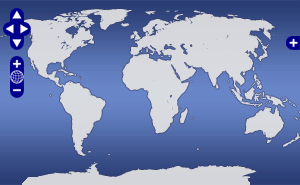Processed multibeam swath bathymetry data for the CORE-VTRCC cruise (2021)
This processed swath bathymetry data set was collected in 2021 over the Vitoria Trindade Ridge and Columbia Channel during research cruise CORE-VTRCC on naval vessel Nho Cruzeiro do Sul. The data files are in MB-System-compatible GSF format (mbio format 121) and contain processed swath bathymetry and acoustic backscatter data. The multibeam bathymetry was collected with the Kongsberg EM-122 deep echo-sounder operating at a frequency of 12 kHz. The system was coupled with the SeaPath 330 positioning system with two GNSS antennas. Acquisition occurred in the Kongsberg SIS software with the ellipsoid WGS-84 and UTM projection. Swath width was to set to be up to 55° with a ping frequency of 40 Hz. Due to the deep characteristics of the EM-122 equipment, multibeam bathymetry was not performed in water depths shallow than 200 m. To estimate sound velocity profiles for bathymetric processing, temperature profiles were first obtained for the water column throughout the survey every 50 nautical miles, for a total of 31 profiles. For that we used Expendable Bathythermograph (XBT) Lockheed Martin model T5 to the deeper portion of the survey (down to 1860 m water depth) and the model T7 over the shallower regions (down to 760 m). A salinity profile was then calculated by linearly interpolating the measured temperature profile to the nearest WOA/RTOFS salinity profile. Sound speed values were then calculated from the salinity updated profile using the UNESCO equation. Sound velocities were then incorporated during the multibeam bathymetry acquisition directly into the SIS software.Multibeam bathymetry preprocessing was performed using the CARIS HIPS software from Teledyne during the cruise. A Patch Test calibration of the echo-sounder was done atop the Columbia Seamount on October 26th on where roll, pitch, yaw, heading and the time delay were calibrated. The corrected values from the Patch Test were then inserted on the processing procedure. Survey velocity range between 4-7 knots. Finally, spike removal and surface equalization processing were performed with the software EIVA NaviModel Producer after the survey. Funding for this work was provided through FAPESP awards 2016/24946-9 and 2020/08847-6, and through the Brazilian Navy program PROAMAZONIA AZUL.
Tagliaro, Gabriel
Investigator
Universidade de Sao Paulo
Gama, Mateus
Investigator
Universidade de Sao Paulo
Britzke, Adolfo
Investigator
Universidade de Sao Paulo
Louro, Vinicius
Investigator
Universidade de Sao Paulo
Bauli, Pedro
Investigator
Universidade de Sao Paulo
Patines, Gabriela
Investigator
Universidade de Sao Paulo
Bonifatto, Gabrielle
Investigator
Universidade de Sao Paulo
Vieira, Ana
Investigator
Universidade de Sao Paulo
Silva, Beatriz
Investigator
Universidade de Sao Paulo
Boni, Geandré
Investigator
Universidade de Sao Paulo
Silva, Luan
Investigator
Universidade de Sao Paulo
Sergipe, Paula
Investigator
Universidade de Sao Paulo
Silva, Raylla
Investigator
Universidade de Sao Paulo
Dos Santos, Sarah
Investigator
UFRN
Caram, Tainá
Investigator
UFF
Pereira, Tayná
Investigator
Universidade de Sao Paulo
Jovane, Luigi
Investigator
Universidade de Sao Paulo
Device Info
Sonar:
Kongsberg:EM122
Platform
Cruzeiro do Sul
Marinha do Brasil
Data DOI
Quality
2
The data have been processed/modified to a level beyond that of basic quality control (e.g. final processed sonar data, photo-mosaics).
License
Data Files
References
Documents
Data Citation Information
ISO/XML Metadata
Expand

 Map View
Map View

